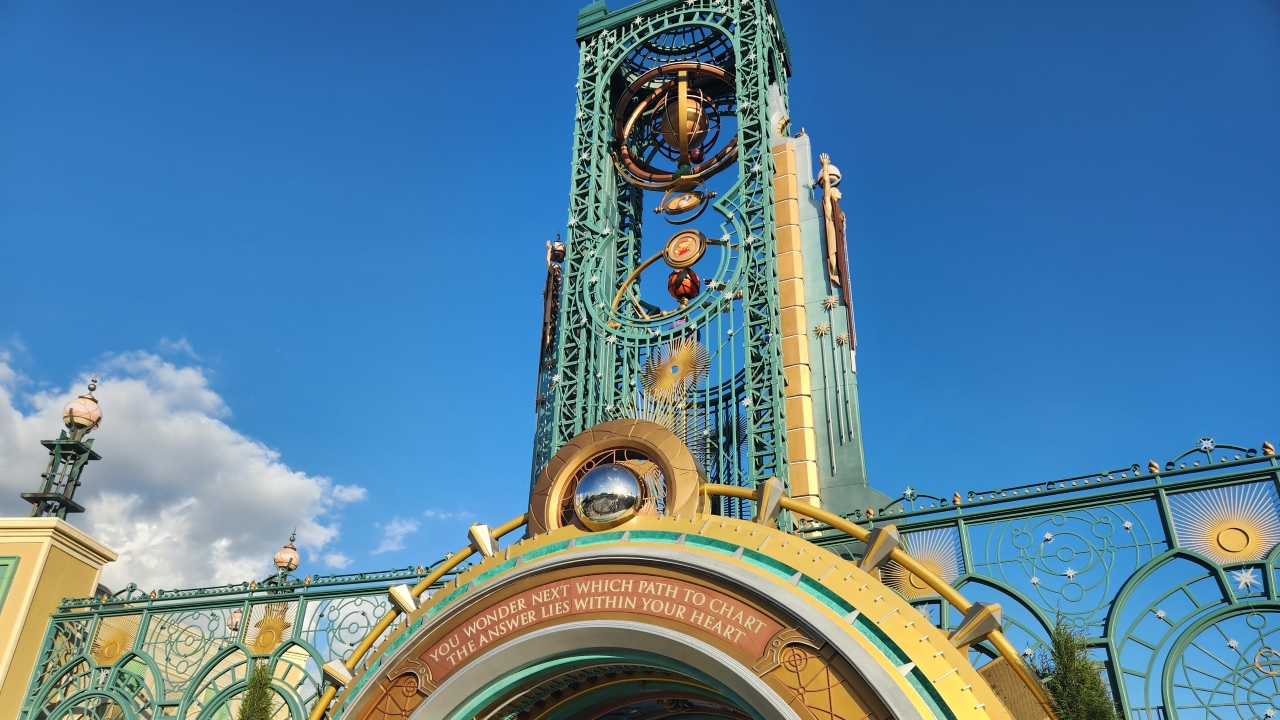J-Stars Victory VS+ Review: Celebrating 45 Years Of Shonen Jump
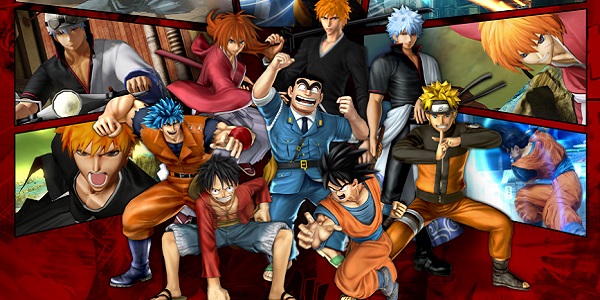
Who would win in a fight, Goku or Naruto? For fans of manga and anime, these are the kinds of conversations that pop up on a regular basis, usually destined to reside forever in the realm of speculation. Now, thanks to the recent launch of J-Stars Victory VS + for PlayStation platforms, the answers to those “what if” scenarios can finally be explored.
Developed by Spike Chunsoft and brought Stateside by Bandai Namco Entertainment for the PlayStation 3, PlayStation 4 and PS Vita, J-Stars Victory VS+ is basically every Shonen Jump fan’s dream come true. The game is a mash-up brawler boasting a roster of more than 50 characters, all coming from Shonen properties from throughout the ages.
If you’ve ever wanted to see the cast of Dragon Ball Z duke it out with the Bleach crowd, this is the place to do it. Desperate to pit those Naruto ninjas against the One Piece pirates? Go for it. Most of the major Shonen series are represented here in one form or another, as well as a whole bunch of characters from properties that are less known here in the States but beloved by diehard fans. From Rurouni Kenshin and JoJo’s Bizarre Adventure to Hunter x Hunter, Fist of the North Star and YuYu Hakusho, 45 years of Shonen history are on display in J-Stars Victory VS+.
That’s probably the best way to look at J-Stars, actually, as a sort of birthday celebration for nearly half a century of powering up, unleashing secret moves or being goofy as hell. Their manga and anime range the spectrum, and all of that is on display in a game that’s positively packed with fan service.
But all of the inside jokes and references in the world wouldn’t be worth much if the core gameplay wasn’t entertaining and, thankfully, J-Stars offers a system that gets the job done nicely.
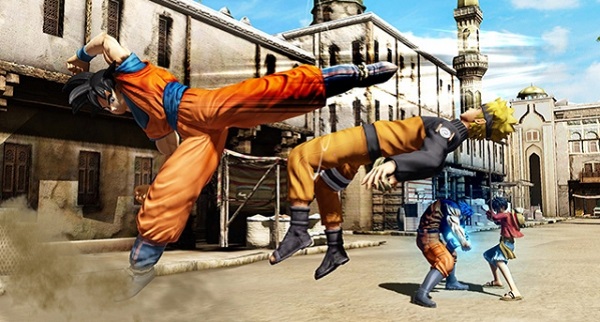
Since most of Shonen’s best-known properties involve a lot of fighting, it’s fitting that J-Stars be an all-out brawler at heart. Similar to games like Smash Bros. or PlayStation All-Stars Battle Royale, J-Stars takes a bunch of beloved characters, throws them into an arena and lets them beat the stuffing out of each other in varied, higly destructible environments.
If you go in expecting a fighting engine with the sort of depth you get out of Mortal Kombat or Street Fighter, you’re probably going to be let down here. J-Stars offers just enough variety to keep battles interesting, but everything is built off of a foundation that translates seamlessly between characters. In other words, there are no complex combos or anything like that to memorize.
CINEMABLEND NEWSLETTER
Your Daily Blend of Entertainment News
Players have a weak and strong attack at their disposal, which can be chained together to create combos. The circle button is what you’ll use to pull off character specific moves, which change depending on whether you’re pressing it in neutral, while holding a direction on the thumbstick or holding down R1 at the time. Holding down R1 also causes your character to block and, from that stance, you can tap Square to do an area attack or Triangle to break an opponent’s guard.
That’s basically it for the core move set. You can do a bit of dodging, jump and dash, but you’ll never get overwhelmed by options. Some characters can charge certain attacks or even power up, which is where the joy of experimentation comes into play as you figure out how to best use each character from the impressive roster.
Battles typically involve teams of two (You, your partner and an assist character), with the first team to land three knockouts earning the victory. Parameters can, of course, be altered in free, couch and online play. If your team is doing really well in a battle, you can also trigger a team ability that gives everyone an extra boost and access to each character’s ultimate move.
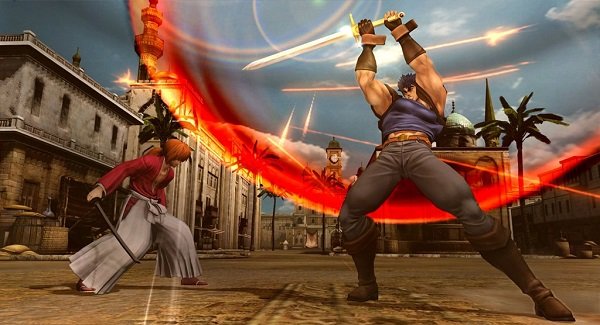
In short, the battle system in J-Stars is snappy and fun, but it’s not without its faults. For starters, characters who get knocked down earn several second of invulnerability when getting back to their feet. That’s nice for the player on the receiving end of a heavy combo, but can slow down the action when all you want to do is press the offensive. Also, loads of moves end with the player launching their opponent into the air, but there are woefully few characters who can actually turn that into a juggling opportunity. There’s a team-up mechanic that’s supposed to allow you to do an aerial combo in those launch situations but, in all my hours of playing, I haven’t gotten that to trigger even once. It should also be mentioned that the camera can occasionally be your worst enemy, especially when you end up amidst a crumbling building.
And then there’s the repetition to the combat. Sure, characters have their own strengths and weaknesses (some work best when dishing out damage from a distance while others are more useful up close and personal, for instance), but those differences aren’t super obvious or relevant. You can get by just fine by falling back on the same tactics with almost every character. That’s great news for pick-up-and-play with friends or folks who just want to cause chaos as their favorite Jump stars, but it’s also kind of a bummer if you were hoping for more depth.
To be fair, the addition of a deck system and those allies I referenced earlier do help flesh things out a little bit for folks who are really into min-maxing their team. Allies offer a variety of abilities when you tap L2 to call them to the field. Some may heal you while others may lock opponents in place or deal direct damage. Knowing which assist will best complement a character’s strengths helps tack on some additional strategy. Also, you’ll eventually earn coins that let you buy collectible cards in the game. These can be combined in a deck of 10 to alter your character. Most give a plus in one area and a minus in another, so crafting a deck that suits your style will be fun for those looking to dive deeper into the game. For casuals or folks who just want to go to war, though, this will likely be overlooked.
All of those fisticuffs are at your disposal in a variety of modes, all mostly par for the course in a fighting game. You can jump online or free battle to your heart’s content. An arcade mode will task you with completing a ladder of six challengers while the Victory Road has you facing off against increasingly more powerful opponents as you move from one location to the next.
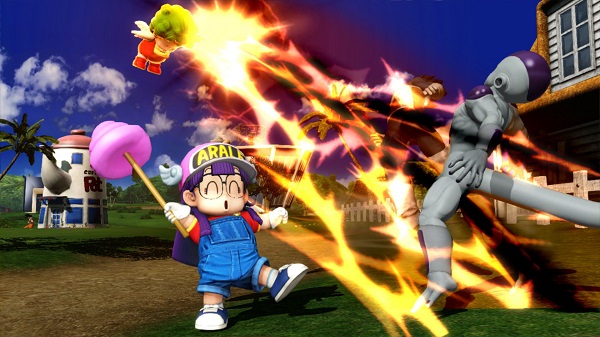
Much of your single player time, though, will be spent in the J-Story mode. There are four J-Stories to pick from, each one focusing on a unique group of characters. The problem here is that all of the campaigns are basically identical. You’ll tackle the same objectives and meet the same NPCs, with the discussions between your selected story’s main characters being the only real thing setting them apart.
Cutscenes are done in the visual novel format, which is appropriate considering the source material. Along the way, you’ll run into all sorts of characters from Shonen manga, including loads of folks who aren’t actually playable in the game. The driving force here is fanservice. Simply seeing these characters interact and occasionally duke it out is plenty reason to dive into a J-Story campaign at least once.
There are some light RPG elements to help keep things interesting, too. You’ll explore an open world map in a floating/flying ship, take on some light missions and progress the story through combat. All of this earns your characters experience, items and in-game currency, which lets you boost stats and unlock the rest of the roster.
Yes, the majority of the roster is locked from the beginning, but you start the game with enough currency to unlock a handful of additional characters and setting the rest free simply requires that you play the game. Literally every mode earns you points to unlock more brawlers.
While not the most robust package or fighting system, J-Stars Victory VS + certainly gets the job done. If you’re interested in this game, it’s because you want to see Vegeta punch Ichigo in the face, and it certainly delivers on that count. It’s clearly a game that was made with the fans in mind, and I think those are the people who will be most pleased with what J-Stars has to offer.
This review based on a PlayStation 4 download of the game provided by the publisher.
Players:1-2
Platforms: PS4 (reviewed), PS3, Vita
Developer: Spike Chunsoft
Publisher: Bandai Namco Entertainment
ESRB: Teen
Rating:

Staff Writer for CinemaBlend.
NCIS: Origins Dropped Some Major Bombshells For Its Sandman Story, And Now The Season 1 Villain Is A Lot More Frightening
90 Day Diaries Dropped Some Massive Kobe And Emily Updates, And I'm So Happy For Them
NCIS Just Threw Some Major Curveballs Into Its LaRoche Storyline, And One Of Them Hit Parker In A Surprising Way







